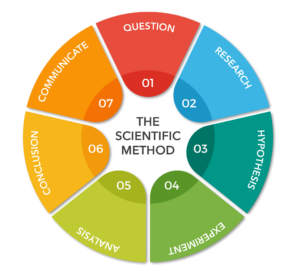Facing and Embracing Ambiguity for Growth
by Troy Geesaman
The morning after I graduated from high school (a lifetime ago), I was on my way to Fort Jackson, South Carolina for US Army boot camp. This 17-year-old kid raised on a rural Pennsylvania farm had no idea what was in store for him. I was instantly immersed into an unknown environment, and while there was lots of structure, I didn’t know my place. It was the ultimate scenario of ambiguity.
My mind was flooded with uncertainty… and fear. I had not yet developed the life skills to navigate a situation where I didn’t know what was coming next. My survival instinct kicked in, and those skills came—sometimes painfully—in the weeks ahead. Little did I understand at the time, that with a career spent understanding consumer behavior and developing creative strategies to reach them, I would become no stranger to discomfort… and how to use it as fuel.
Here are a few things I’ve learned along the way that may help others feeling overwhelmed in the face of ambiguity.
Step 1: Silence the voice of doubt.
The mind is a magnificent thing, yet its imaginative powers can quickly stir up the feeling of panic when faced with an ambiguous challenge. With the swirling anxiety of knowing you need to act, but not yet knowing the specifics of the problem you’re acting on, it’s helpful to find something to grab onto. Channel the confusion and chaos in your mind into curiosity by focusing on what you do know—the facts and controllables. What are the known details, context, data, trends? Write it all down. Don’t worry about solving anything, just observe, acknowledge, and prepare to move forward.
Step 2: Find your WHY.
With your facts collected, ask yourself WHY you need to solve this. Don’t be satisfied with a surface answer. It’s a good practice to go at least 3 WHYs deep—meaning, keep asking WHY after you answer the first and second questions so that you really dig into a deep understanding of WHY. Understanding the motivation behind solving the issue can help provide some clues in how to approach solving it.
One method to explore your WHYs is with a mind map. With your list of facts as a center point, start drawing out WHY solving this matters. No editing yourself, just brainstorm reasons. Once you’ve reached a stopping point, step back from your mind map and see what themes are emerging. Hopefully, after some pondering and perhaps some more mapping, you’ll arrive at a grand “ah-ha!” when you spot the real, big reason WHY this all matters.
Step 3: Take a scientific approach.
We often say that strategy and creative is part art and part science. But if you’re like me, you may not have heavied up on the science side in your academic studies, nor spent a lot of lab time over the course of your career. So, to complement our creative brain, let’s take a page from our science friends and apply “The Scientific Method” to approach the ambiguous challenge in front of us.

01 Question: Upon observation of patterns, anomalies, or phenomena, identify question to be answered or problem to be solved (check! This was our step 1 above)
02 Research: Learn what is already known about the topic
03 Hypothesis: Form a hypothesis to explain what was observed
04 Experiment: Test the hypothesis by conducting an experiment
05 Analysis: Analyze the data from the experiment
06 Conclusion: Draw conclusions from the data
07 Communicate: Report the findings
Collect this information in one place. Don’t worry about organizing it in any special way; just focus on getting smart!
Step 4: Create a framework.
At this point, you’re well equipped with facts, an understanding of why it matters, and some vetted context to get you ready to form a framework towards a solution. To build a framework, set the context and state your end goal (what do you hope to achieve by solving this problem?). Begin by writing out the big milestones that need to be achieved to get you from here to there. Even if they aren’t in a specific order, capture the “big boulders” first, then fill in the details.
Now, digging deeper… What steps are needed to make THAT happen? Keep going until you have a clear plan, with distinct stepping stones that lead you to your solution or end goal. Look for models or frameworks online that help you visualize your full plan. Pro tip: Leverage the power of AI to create a plan or framework.
Facing an ambiguous challenge isn’t easy, but you can embrace it by taking a deep breath and taking it one step at a time. Find ways to ground yourself in something solid—from listing out what you know to be true, to arranging it into a systematic framework. And of course, through it all, embrace your curiosity as you take on the adventure of ambiguity.

A connector at heart,Troy brings together ideas and action, learning and context, humanity and leadership. With over 20 years of client-side experience and nearly 20 years on the agency side, Troy has led the strategy and launch of numerous successful products across a wide range of industries—from financial services and mobile technology to food, beverages, and spirits.
Connect with us! Follow Seed Strategy on LinkedIn, X, Facebook and Instagram.
Source: Feature Image – ©JP STUDIO LAB – stock.adobe.com






